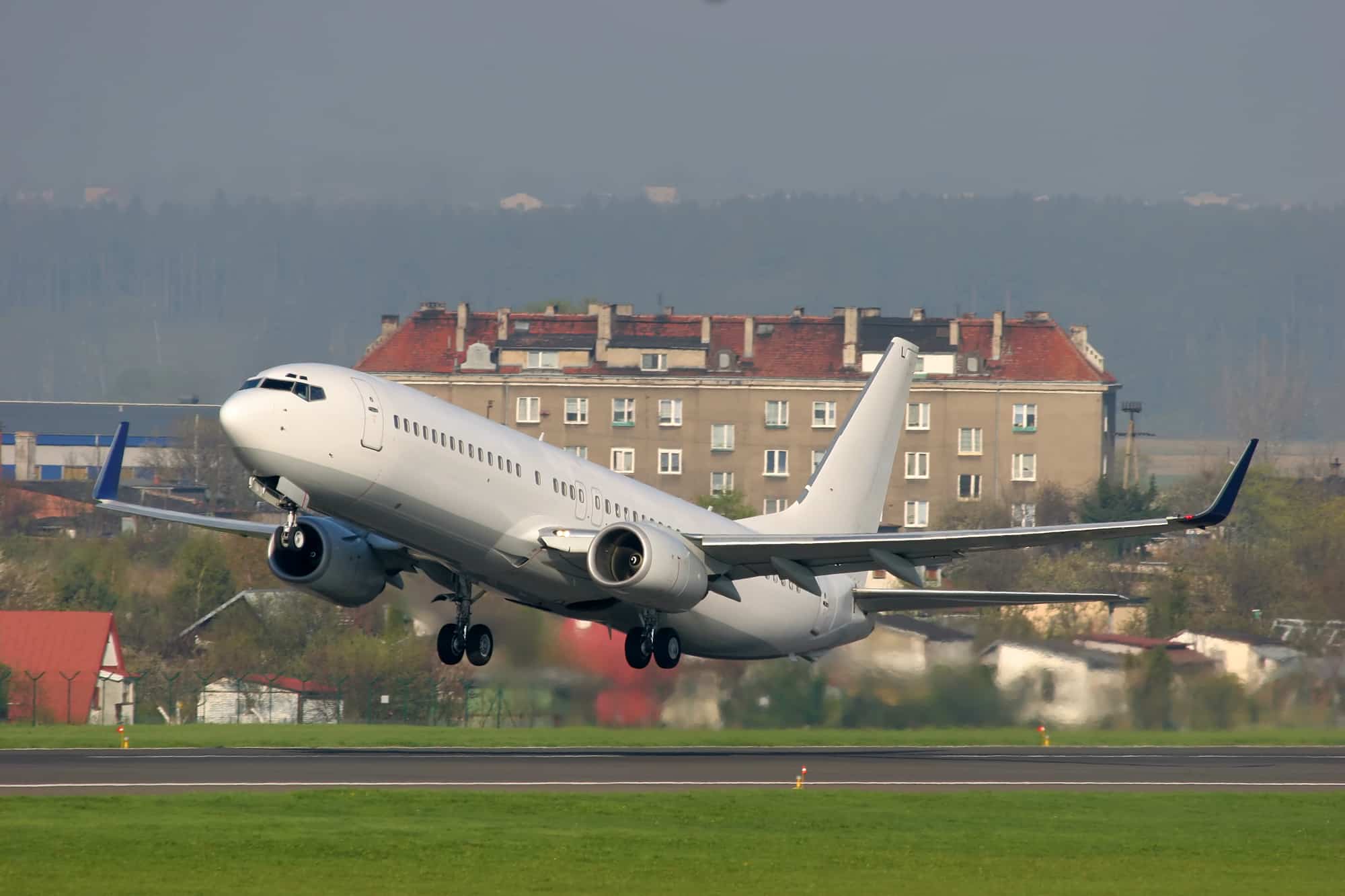We are always experiencing some G-force, which is the gravity or acceleration on our bodies. G-force is usually consistent when we are on earth, but it changes when we are not standing, like when we are on a plane.
But how much G-Force do passengers experience in a plane?
Passengers on a plane experience between 0.7G and 1.3G on average on a plane. On earth, we are always experiencing 1G, which is the standard force of gravity on earth.
So, on a plane, we experience only a few tenths of G-force, more or less than the G-force we are used to on earth, which is why being in a plane does not feel too much different except for maybe a few seconds during takeoff or landing.
This article explains what G-force is on a plane, what G-force is when we take off on a plane, and how it differs from when we land. We also detail what 1G feels like and how much G-force we can experience.
Table of Contents
What is G-Force on a Plane?
G-force on a plane is the acceleration we feel when we fly, and it is especially prominent during takeoff and landing.
The G in G-force stands for gravity. When you take off and land, the gravity on your body changes, which is why you may move a little during the beginning and end of a flight.
Here is the scientific definition of G-force from dictionary.com:
A force acting on a body as a result of acceleration or gravity, informally described in units of acceleration equal to one g.
When the plane accelerates leading up to and during takeoff, the force on your body changes, which is why the G-force changes. This same thing happens when the plane lands and starts to decelerate.
You May Also Like: How Much Fuel Does a 737 Hold?
What Does 1G Feel Like?
One of the most common forces you will experience and hear about is 1G. But what does 1G feel like?
1G feels like, well, nothing. Right now, as you stand on earth, you are experiencing 1G force. This force is what keeps you firmly planted on the ground.
Without 1G force coming from the earth at all times, there would not be enough acceleration to keep us on the ground.
If we had any less G force on earth, we would start floating, similar to how astronauts do on the moon. The G force of the moon is one-sixth that of the earth, meaning it has a G force of 0.166G.
And, a force of 0G or zero-G would make you feel weightless. If someone refers to something as zero gravity, they mean there is 0G of force on that person or object.
Pilots are trained to understand G-force, especially fighter and military pilots, so they can keep themselves and everyone else in the plane safe from experiencing too much G-force.
Pilots’ knowledge regarding G-force proves why the front of the plane, or cockpit, and the people in them, are so important.
How Much G-Force Can a Person Handle?
So, we are used to experiencing 1G of force at all times, but what is the maximum amount of G force a person can handle?
The absolute maximum G-force a person can handle is around 9G. But, reaching a G-force this high is rare.
The good news is that we are never subject to 9G force without actively seeking it out, even on a standard plane ride. So, you don’t have to worry about any sudden consequences from too much G-force.
For example, the maximum G-force experienced on a roller coaster is 6.3G, which riders on South Africa’s Tower of Terror experience. But, most roller coasters experience a G-force of only 5G for a few seconds, which is why they are safe for us to ride.
These maximums are also just estimates. The maximum G-force varies by person, so some people cannot even handle 9G.
However, there are ways to increase your G-force tolerance. If you stay hydrated, are well-rested, and eat well, you will feel much better on a plane and have a higher g-force tolerance. These are good ways to prepare for a flight, even though the G-force you experience on a plane is low.
What is the G-Force of a Plane Taking Off?

One of the few times we experience more than 1G is when we take off in a plane. The G-force of a plane taking off is around 1.2 or 1.3G.
You may notice this change in G-force when the plane takes off, and you feel stuck to your seat. The change is on a linear plane, so you feel it from your chest to your back.
On the other hand, we also experience G force when we land, but it is in the opposite direction. The G-force is on the same linear plane, and you will feel it from your back to your chest, which is why you will lurch forward for a couple of seconds during landing.
When we land, we experience slightly less G-force than we experience on earth, which is around 0.7G or 0.8G.
Again, you only experience this force for a few seconds when you land. During the rest of the flight, you likely will not notice any difference in force on your body.
Aircraft brakes work quickly to stop the plane, which minimizes the change in G-force you feel during landing. The quick stop on the ground is why you lean forward when you land but end up sitting normally again within a few seconds of touching the ground.

